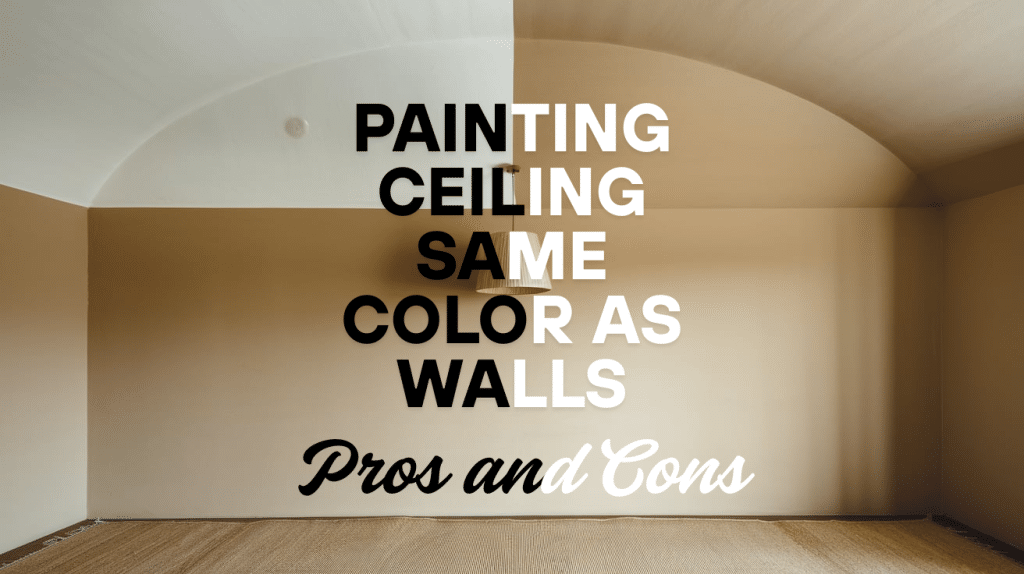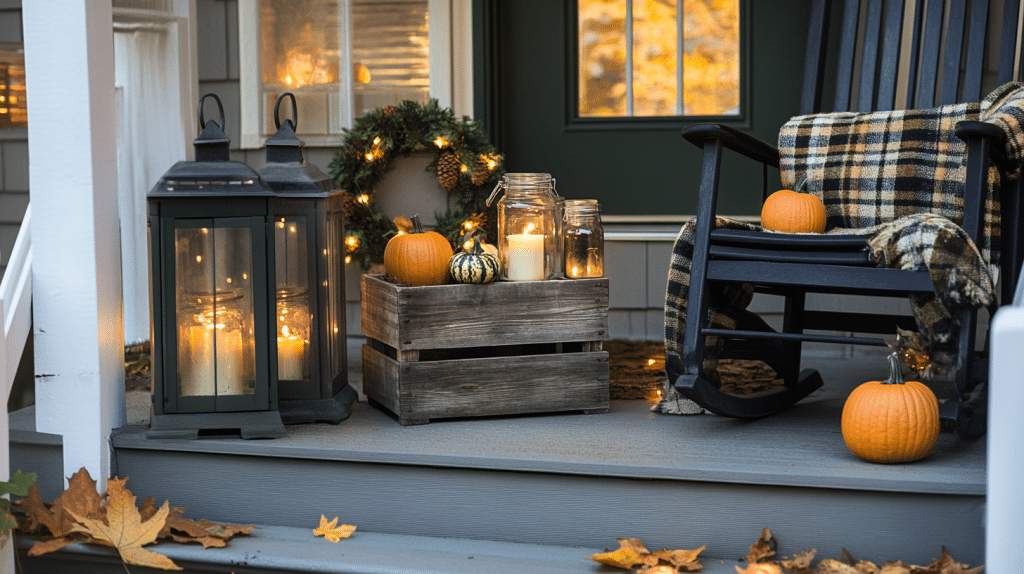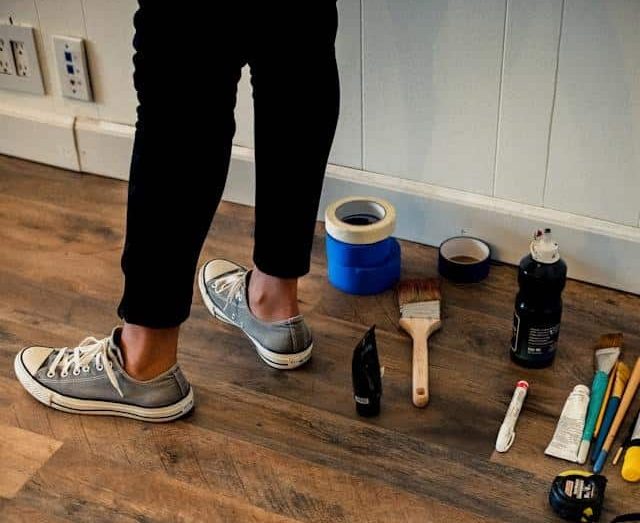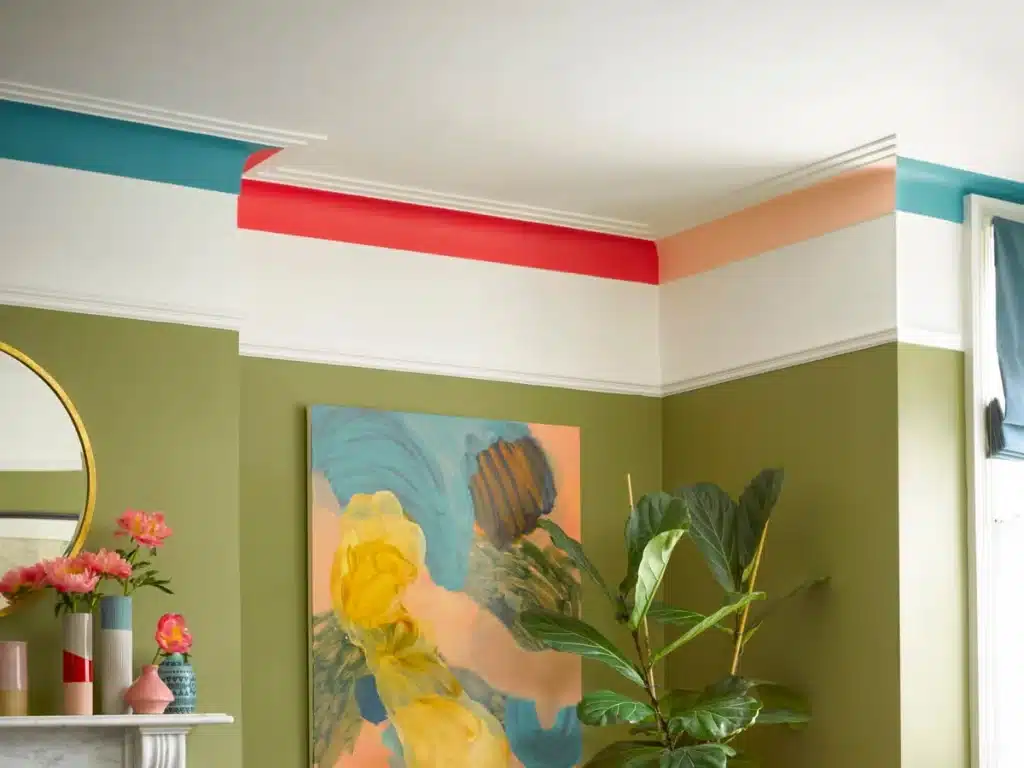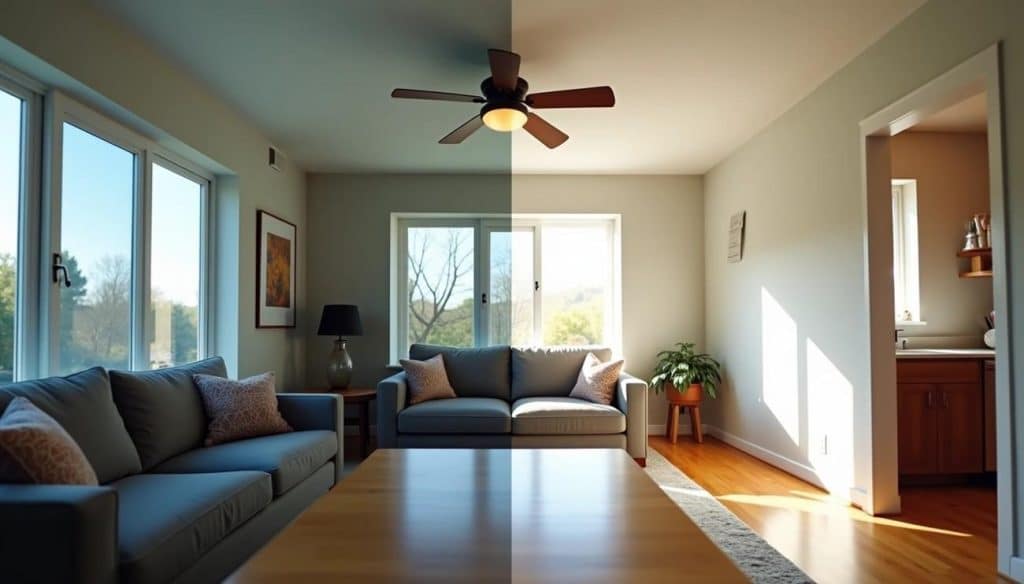When it comes to home decor, choosing the right colors can make a huge difference.
One trend that’s been gaining popularity is painting the ceiling the same color as the walls. This approach offers a sleek, unified look, but is it the right choice for every room? There are both pros and cons to consider.
On one hand, it can create a graceful feel and even make smaller spaces appear larger.
On the other hand, it might make a room feel a bit more enclosed or lacking in contrast. Let’s plunge into the details so you can decide if this style is right for your next project.
Concept of Matching Wall and Ceiling Colors
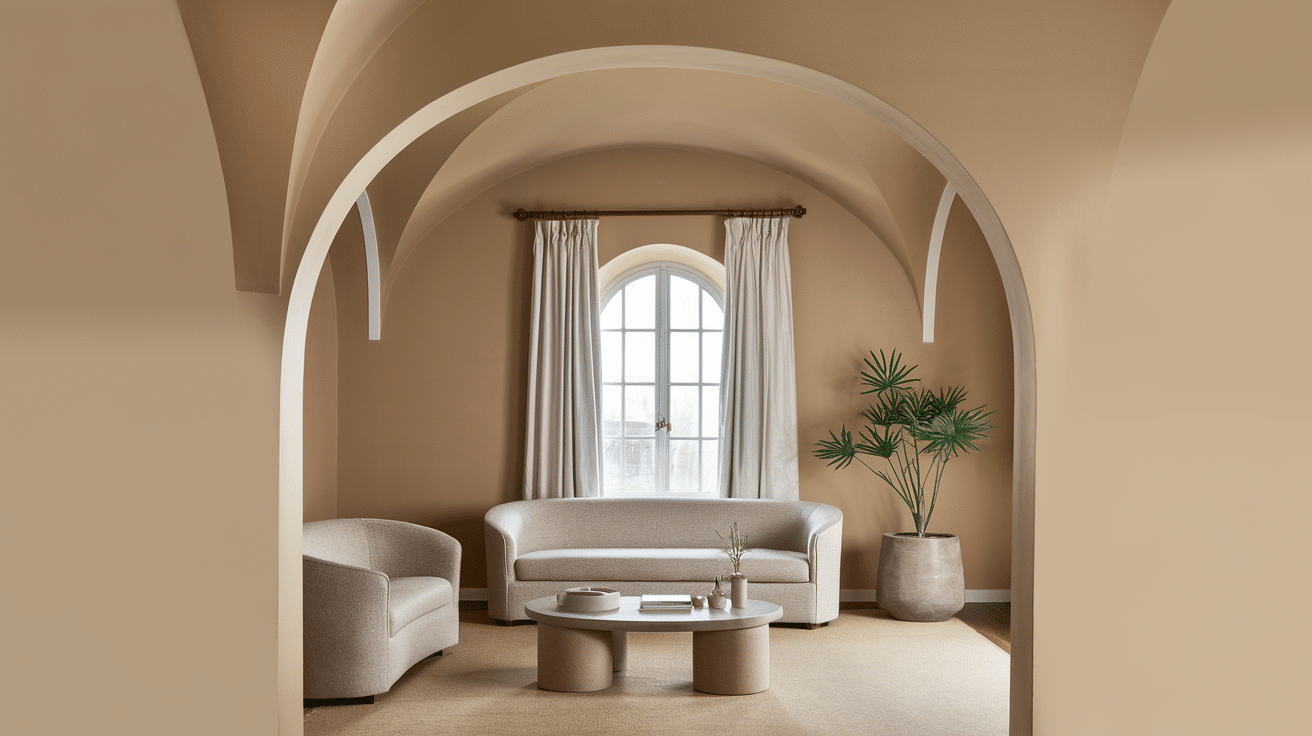
When you enter a room, your eyes naturally take in both the walls and ceiling as part of the same visual experience. This is where the concept of matching these surfaces with the same color comes into play.
Think of your room as a complete box rather than separate planes. Using the same color on both walls and ceiling creates a flawless, cohesive look that can alter how you perceive the space. This approach has gained popularity in interior design circles for its ability to create unique spatial effects.
The idea breaks from traditional design rules where ceilings are defaulted to white. By extending your wall color upward, you’re making a deliberate design choice that affects the entire feel of your room.
This technique can make the boundaries between surfaces less noticeable, allowing other elements in your room to stand out.
Picture yourself looking around a room where the color flows uninterrupted from wall to ceiling. Without the stark contrast of a white ceiling, your eye moves more naturally through the space. This continuous color can create a cozy, enveloping feeling, almost like being wrapped in your favorite color.
This technique can eliminate the harsh line where the wall meets the ceiling, creating a more expansive feel in smaller rooms. In larger spaces, it can add warmth and intimacy that might otherwise be lacking.
Pros and Cons of Painting Ceiling Same Color as Walls
Before choosing the perfect finish for your home, consider the
To make things easy, below is a table that can help you to choose the right fit for the right place.
| Pros | Cons |
|---|---|
| Makes rooms appear larger by removing the visual break between walls and ceiling. | Can make a room feel smaller if you choose a dark color in a space with low ceilings. |
| Creates a modern, designer look that feels intentional and on-trend. | May feel overwhelming in large rooms where the color becomes too dominant. |
| Hides imperfections in the ceiling-wall transition areas like crooked crown molding. | Highlights ceiling flaws like cracks or texture issues that might be less noticeable with white paint. |
| Provides a cozy, enveloping feeling that works well in bedrooms and intimate spaces. | Reduces the perceived height of your room, which might not be ideal if you already have low ceilings. |
| Simplifies the painting process with fewer transitions to tape and edge. | Limits your flexibility to change just one surface if you want to update your room later. |
| Makes constructive details pop when the trim is painted in a contrasting color. | It can darken your space if you don’t have adequate lighting, especially with deeper colors. |
The Aesthetic Benefits of a Unified Color Scheme
- Creates a smart look throughout your room, eliminating the harsh line where walls meet ceilings.
- Make your space feel larger by removing visual boundaries that can make rooms feel chopped up or smaller.
- Draws attention to your furnishings and decor rather than to the structure of the room itself.
- Adds a modern, designer touch that shows you’ve made deliberate style choices beyond traditional painting rules.
- Enhances constructive features like crown molding, which can stand out beautifully against a unified background.
- Creates a cozy, enveloping atmosphere that wraps the entire room in your chosen color.
- Works wonderfully with monochromatic color schemes, allowing subtle variations in texture to shine.
- Helps highlight statement pieces like bold artwork or unique furniture by providing a consistent backdrop.
- Makes low ceilings feel less oppressive since there’s no color change to emphasize ceiling height.
Lighting Considerations When Choosing a Ceiling Color
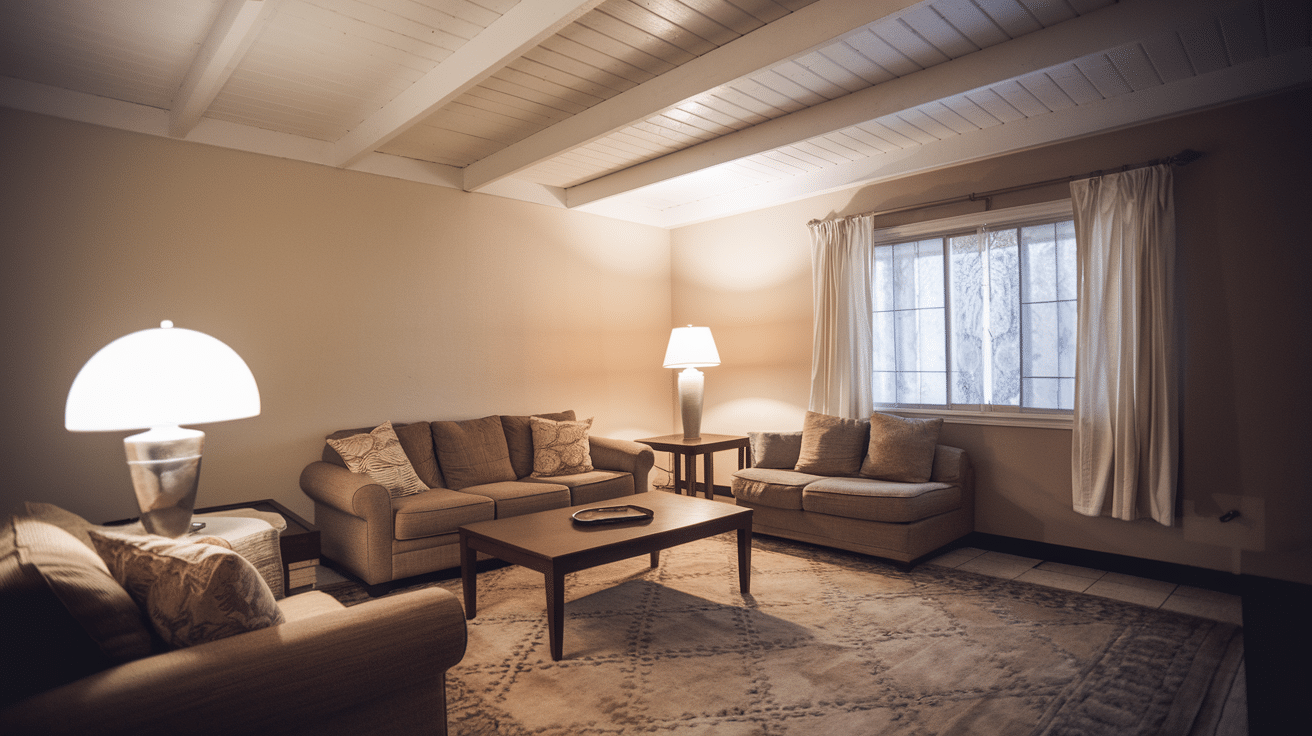
Lighting plays a crucial role in deciding how to paint your ceiling the same color as your walls. The way light interacts with your color choice can dramatically change how your room feels and functions.
Natural light affects your color choice more than you might think. Rooms with plenty of windows and sunlight can handle darker ceiling colors without feeling closed in. If you’re blessed with large windows or skylights, extending your wall color to the ceiling won’t dim the space as much as it would in a darker room.
Consider how your room faces:
- North-facing rooms receive cooler, bluish light that can make colors appear more muted. A matching ceiling might feel too dark here unless you choose a lighter shade.
- South-facing rooms enjoy warm, consistent sunlight throughout the day, making them ideal for matched ceiling colors, even in deeper tones.
- East-facing rooms are brightest in the morning with yellow-toned light.
- West-facing rooms get warm afternoon light that turns redder as the day progresses.
Your artificial lighting setup matters just as much as natural light. Think about:
- Ceiling fixtures – Will they cast light upward or downward? Upward-facing lights can brighten a dark ceiling, while pendant lights draw the eye up, making the ceiling color more noticeable.
- Wall sconces – These create a warm glow that can soften the transition between walls and ceilings.
- Floor lamps – illuminate the walls more than the ceiling so that a matching ceiling might recede into shadow.
Consider testing your color in different lighting conditions before committing. Paint a sample on both the wall and ceiling, then observe it at other times of day and with various lights turned on.
By considering lighting, you’ll achieve the perfect balance when deciding if you want your ceiling color to match your walls.
Minimalism vs. Visual Interest in Room Design
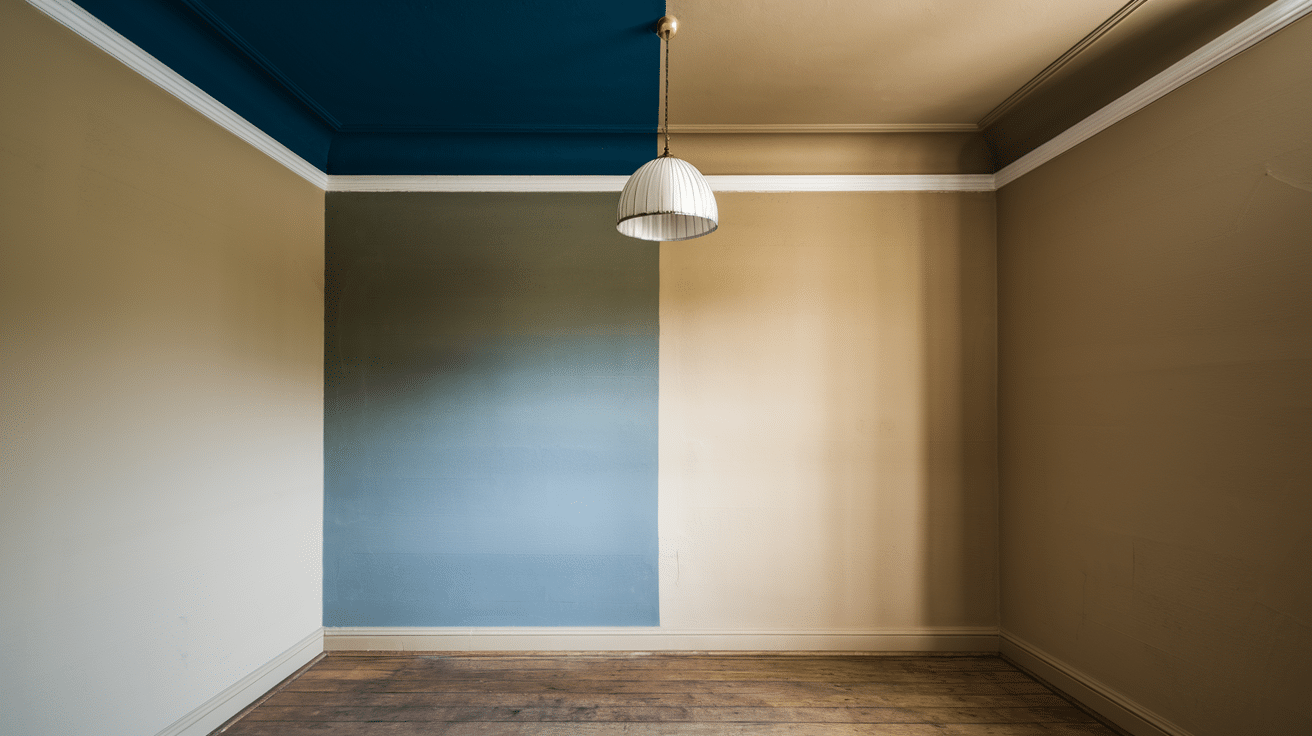
Matching your ceiling to your wall color creates a graceful, minimalist look that lets furniture and decor stand out against a clean backdrop.
In contrast, using different colors for the walls and ceiling adds visual interest and dimension to your space.
| Minimalism | Visual Interest |
|---|---|
| Same-color ceilings and walls create a clean, uncluttered look that many minimalists love. The flawless transition removes visual boundaries. | Traditional white ceilings create a contrast that naturally draws the eye upward and creates visual layers in your room. |
| The monochromatic approach feels intentional and modern. Without the distraction of color changes, your furniture and decor become the stars. | Color variation adds depth and dimension to your space. Different ceiling and wall colors create a framework that helps define the room’s boundaries. |
| Fewer color transitions mean fewer decisions about where one color should stop and another begin perfect if you prefer simplicity. | Playing with different colors allows for creative expression. For a more personalized design, you can use the ceiling color to complement or contrast with your walls. |
| The unified look creates a peaceful backdrop that can reduce visual noise and build a sense of calm, ideal for bedrooms or meditation spaces. | Contrasting colors can energize a space and make it feel more lively. This works well in social areas like living rooms where activity is the focus. |
| Matching colors can showcase constructive details like crown molding by eliminating distracting color changes and letting texture stand out. | Different ceiling colors can hide or highlight structural elements. A darker ceiling can disguise ductwork, while a contrasting color draws attention to coffered details. |
Choosing the Right Paint Finish for Walls and Ceilings
Paint finish can make or break your room’s look and feel. Many people pick colors carefully but overlook the importance of finish. The right finish not only affects how your walls look but also how they perform over time.
Let’s look at your options and when to use each type.
Matte/Flat Finish
Satin Finish
Semi-Gloss and Gloss
Wrapping it Up
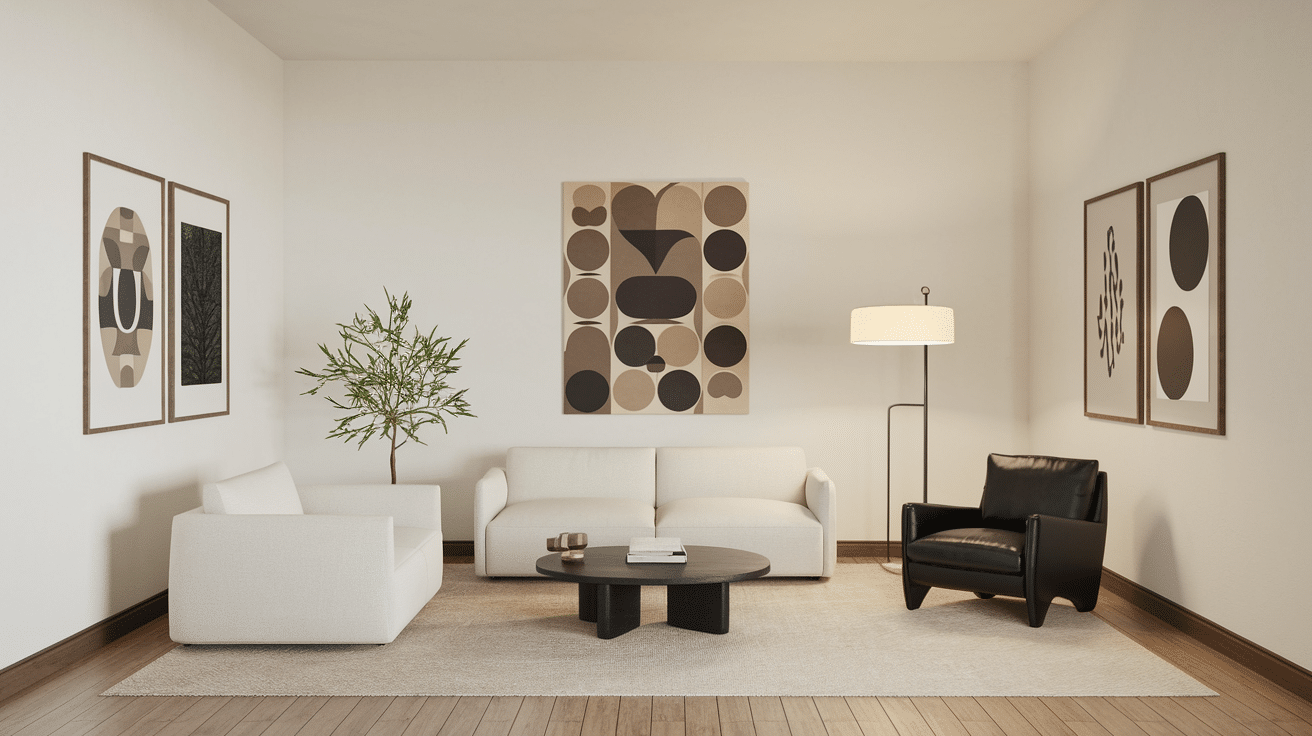
In the end, deciding if to to paint your ceiling the same color as your walls depends on your style and the effect you want to achieve.
While a unified color scheme can make a room feel larger and more cohesive, it may also sacrifice contrast and dimension.
When making this decision, consider the room’s size, lighting, and functionality. If you’re after a sleek, minimalist look, this style might be the perfect fit.
However, if you prefer a bit of visual interest and depth, contrasting colors may be the way to go. Just keep in mind the
Whatever you choose, remember that paint is an easy way to convert your space, so have fun with it!


